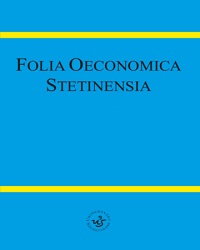Neural Network Application to Support Regression Model in Forecasting Single-Sectional Demand for Telecommunications Services
Neural Network Application to Support Regression Model in Forecasting Single-Sectional Demand for Telecommunications Services
Author(s): Paweł KaczmarczykSubject(s): Methodology and research technology, Policy, planning, forecast and speculation, ICT Information and Communications Technologies
Published by: Wydawnictwo Naukowe Uniwersytetu Szczecińskiego
Keywords: Prediction System; linear regression; feedforward neural network; forecasting;
Summary/Abstract: The aim of this research study is to test the effectiveness of the single-sectional integrated model, in which a neural network is applied to support a regression, as a consistent tool for short-term forecasting of hourly demand (in sec.) for telecommunications services. The theoretical part of the paper involves the idea of the single-sectional integrated model and differences between this model and a multi-sectional integrated model. Moreover, the research methodology is described, i.e. the elements used in the constructed model (the feedforward neural model and the regression with dichotomous explanatory variables), and the manner of their integration are discussed. In the empirical part of this work, the results of the carried out experiments are included. The comparison of the obtained effectiveness (in terms of approximation and prediction) of the explored single-sectional integrated model with the effectiveness of the non-supported regression model and the multi-sectional integrated model are conducted. In this research work, it is proved that the single-sectional integrated model enables better results in comparison to the non-integrated regression and the mutli-sectional integrated model. The originality of this paper is based on: the created single-sectional integrated model in terms of the analysed phenomenon, the verification of the model effectiveness, and the comparison of the constructed model with other models and assessment.
Journal: Folia Oeconomica Stetinensia
- Issue Year: 18/2018
- Issue No: 2
- Page Range: 159-177
- Page Count: 19
- Language: English

